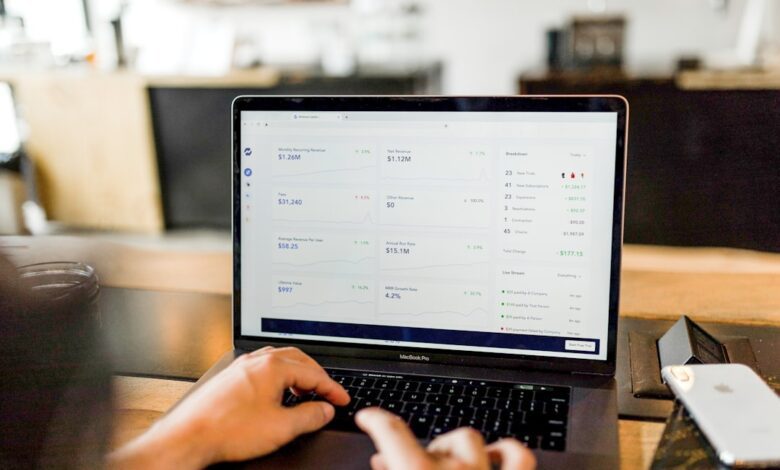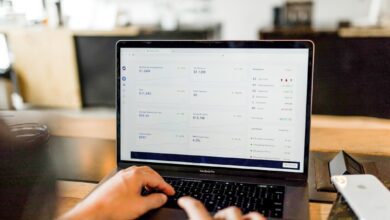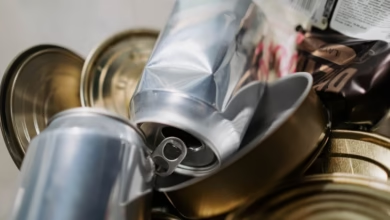Metals in Motion: Analyzing Industrial Demand, Investment Trends, and Economic Indicators

In the ever-evolving landscape of global markets, metals play a pivotal role that extends far beyond their physical properties. From the gleaming allure of silver to the industrial applications of copper, the demand for these materials is intricately linked to economic trends, technological advancements, and investment strategies. As industries pivot toward sustainability, the significance of rare earth metals has surged, while precious metals like platinum and palladium have emerged as critical players in the investment arena. This article delves into the multifaceted world of metal markets, exploring how inflation influences prices, the implications of mining regulations, and the future of aluminum in a sustainable economy. By examining these interconnected themes, we aim to provide a comprehensive understanding of how metals not only serve as vital components in various sectors but also as essential assets for diversifying investment portfolios. Join us as we navigate the complexities of the metal markets and uncover the nuances that shape their dynamics.
- 1. **Navigating the Metal Markets: Silver's Dual Role in Industry and Investment**
- 2. **Copper Chronicles: Understanding Price Fluctuations and Global Economic Indicators**
1. **Navigating the Metal Markets: Silver's Dual Role in Industry and Investment**
Silver occupies a unique position in the metal markets, serving both as a critical industrial component and a sought-after investment asset. This dual role reflects its versatility and intrinsic value, making it a fascinating subject for investors and industry stakeholders alike.
In the industrial realm, silver is prized for its exceptional conductivity, thermal properties, and antibacterial qualities. It is widely used in electronics, solar panels, batteries, and medical devices, with the demand for these applications driving a significant portion of silver consumption. As industries increasingly adopt green technologies—such as solar energy—silver's role is expected to grow. The increasing push for renewable energy solutions highlights silver's importance in the transition to a sustainable economy, further solidifying its place in industrial applications.
Simultaneously, silver is viewed as a safe-haven investment, often sought after during periods of economic uncertainty. Investors flock to silver as a hedge against inflation and currency fluctuations, similar to gold. This investment demand can lead to price volatility, influenced by factors such as geopolitical tensions, economic indicators, and market sentiment. The allure of silver as a tangible asset provides investors with a means to diversify their portfolios while capitalizing on its potential for appreciation.
Navigating the metal markets requires an understanding of how these two roles interact. Industrial demand can significantly impact prices, but so can investment trends. For instance, a surge in industrial usage may lead to tighter supply and higher prices, attracting speculative investment. Conversely, if economic conditions improve, investors may shift their focus from safe-haven assets to equities, potentially depressing silver prices.
Overall, silver's dual role underscores its significance in both the industrial landscape and the investment sphere. As technology evolves and global economic dynamics shift, understanding these interconnections will be crucial for stakeholders aiming to make informed decisions in the metal markets.
Silver plays a dual role in both industrial applications and investment markets, making it a unique asset among metals. In industrial contexts, silver is renowned for its excellent conductivity and antibacterial properties, leading to its widespread use in electronics, solar panels, medical instruments, and even water purification systems. As industries continue to innovate and prioritize sustainable practices, the demand for silver in green technologies, particularly in solar energy production, is expected to rise. This industrial demand often influences silver prices, which can fluctuate based on technological advancements and shifts in the manufacturing sector.
In the investment sphere, silver is viewed as a safe-haven asset, akin to gold. Investors typically turn to silver during economic uncertainty or inflationary periods, seeking to hedge against currency devaluation. The silver market can be more volatile than gold due to its smaller market size, but this volatility can present both risks and opportunities for investors. Additionally, silver's price is often influenced by speculative trading, as well as broader economic indicators, such as interest rates and global economic health.
The correlation between copper prices and global economic health underscores the importance of industrial metals as economic indicators. Copper, often referred to as "Dr. Copper" for its ability to predict economic trends, is extensively used in construction, wiring, and plumbing. Rising copper prices typically signal increasing demand and economic expansion, while falling prices may indicate economic slowdowns. Investors closely monitor these price movements to gauge market sentiment and overall economic conditions.
The rise of green energy technologies significantly impacts the demand for rare earth metals, which are critical for manufacturing high-tech devices, batteries, and renewable energy systems. As countries commit to reducing carbon emissions and transitioning to cleaner energy sources, the need for rare earth elements is projected to grow. This surge in demand can lead to increased prices and greater competition for resources, further emphasizing the strategic importance of these metals in the global economy.
When comparing platinum and palladium as investments, it is essential to consider their unique properties and market dynamics. Platinum, used primarily in catalytic converters and jewelry, has seen fluctuating demand due to shifts in automotive production and consumer preferences. Palladium, on the other hand, has surged in popularity as stricter emissions regulations drive its use in gasoline engines. Investors must assess factors such as supply constraints, technological advancements, and geopolitical influences to determine which metal may offer better returns in the current market landscape.
Incorporating metals into an investment portfolio can provide diversification and a hedge against economic volatility. Precious metals like gold and silver tend to perform well during market downturns, while industrial metals can reflect economic growth. A balanced approach can help investors navigate market fluctuations and capitalize on different economic cycles.
Inflation has a profound impact on the prices of both precious and industrial metals. As inflation rises, the purchasing power of fiat currencies declines, often prompting investors to seek tangible assets like metals as a store of value. This increased demand can drive up prices, creating a feedback loop where higher metal prices contribute to inflationary pressures. Understanding this relationship is vital for investors looking to protect their portfolios during economic uncertainty.
Looking to the future, aluminum is poised to play a crucial role in a sustainable economy. As lightweight and recyclable materials gain importance in reducing carbon footprints, aluminum's versatility makes it an attractive option for various applications, including transportation and packaging. Innovations in recycling technologies and the development of low-carbon production methods are likely to enhance aluminum's appeal, positioning it as a key player in the transition to a more sustainable economy.
Finally, mining regulations significantly influence metal prices by impacting supply dynamics. Stricter environmental regulations can lead to increased costs for mining companies and potential supply shortages, which may drive prices higher. Conversely, regulatory changes that streamline operations or increase production capabilities can lead to price stabilization or declines. Understanding the regulatory landscape is essential for investors and industry stakeholders as they navigate the complex interplay between policy and market forces.
2. **Copper Chronicles: Understanding Price Fluctuations and Global Economic Indicators**
Copper, often referred to as "Dr. Copper" for its ability to diagnose economic health, plays a crucial role in reflecting broader global economic trends. Its price fluctuations are closely tied to industrial demand, construction activity, and manufacturing output, making it a reliable indicator for investors and economists alike.
When economic growth is robust, demand for copper tends to rise, driven by increased construction projects and industrial production. This demand can lead to higher copper prices, signaling confidence in the economy. Conversely, during economic downturns or slowdowns, demand for copper decreases, resulting in lower prices. For instance, during the COVID-19 pandemic, copper prices initially plummeted due to halted industrial activity but rebounded sharply as economies reopened and infrastructure projects resumed.
Additionally, copper prices are influenced by global supply chain dynamics, geopolitical tensions, and trade policies. For instance, disruptions in major copper-producing countries, such as Chile and Peru, due to strikes or regulatory changes can lead to significant price spikes. Furthermore, with the increasing focus on renewable energy and electric vehicles, copper's role is expanding, as it is essential for wiring and infrastructure in these technologies, potentially leading to sustained demand and higher prices in the long term.
Investors closely monitor these price movements, using them as a barometer for economic conditions. A rising copper price often indicates a bullish economic outlook, while falling prices may reflect underlying economic challenges. As such, copper serves not only as a vital industrial metal but also as a key economic indicator, providing insights into the health of the global economy.
In conclusion, the multifaceted landscape of metal markets reveals the intricate relationships between industrial demand, investment strategies, and global economic health. Silver, with its unique dual role, serves as both a vital industrial component and a safe-haven asset, illustrating the complex dynamics that govern metal prices. Meanwhile, copper prices not only reflect immediate economic conditions but also act as barometers for future growth prospects. As green energy technologies continue to advance, the demand for rare earth metals is poised for significant growth, presenting both opportunities and challenges in resource management.
The ongoing debate between platinum and palladium investments underscores the need for investors to carefully evaluate market conditions and technological advancements. Diversifying investment portfolios with metals remains a strategic approach to mitigating risks, especially in the face of inflationary pressures that can affect the prices of both precious and industrial metals. Furthermore, the future of aluminum appears promising, particularly in the context of sustainable practices and circular economies.
Finally, as mining regulations evolve, they will undoubtedly influence metal prices and market stability. Understanding these factors is essential for investors and industry stakeholders alike, as they navigate a complex and ever-changing landscape. Embracing a holistic view of the metal markets will empower informed decision-making, ultimately shaping the future of both industrial applications and investment opportunities in this vital sector.





